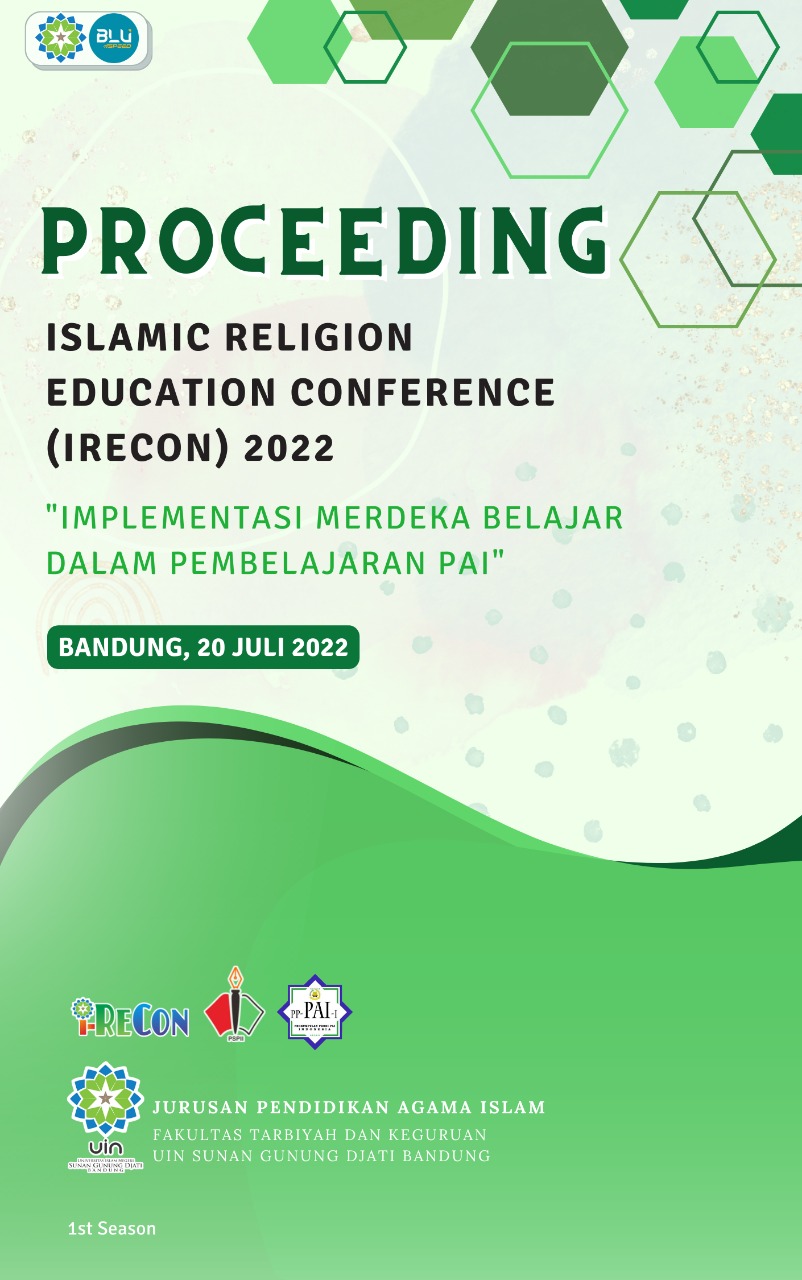Desain Media Pembelajaran Berbasis Aplikasi Android untuk Pelajaran Fiqih Materi Waris Kelas XI Madrasah Aliyah
Abstract
The purpose of this study was to design an android-based learning media using the Kodular web site for class XI students at MAN 1 Garut and to determine the feasibility of learning media based on android applications. This research is a research and development (R&D) adapted and modified from the 4D development model developed by Thiagarajan. Activities at each stage of development are: definition stage, design stage, development stage, and dissemination stage. Based on the research results, it is known that: 1) Android Application-Based Learning Media Development is carried out in 4 stages, namely: a) Preliminary study; b) Design; c) Development; and d) Trial and evaluation. 2) Android Application-Based Learning Media is feasible to use based on the assessment of: a) Material experts obtained results of 88.97% (very feasible); and b) Media experts got a result of 84.60% (very decent). 3) Student assessment of small group trial learning media obtained results of 83.13% (very feasible) and field tests obtained results of 87.48% (very feasible). The conclusion of this study is that the learning media received a very positive response from students.
Downloads
References
Abdurrahman, M. (2016). Pendidikan Bagi Anak Berkesulitan Belajar. Jakarta: Rineka Cipta.
Antika, L. .. (2017). Hubungan Antara Keterampilan Berpikir Kritis dengan Hasil Belajar Biologi dengan Model Reading-Concept Map-Think Pair Share (Remape TPS). Science Education National Conference. Malang.
Arifin, Z. (2009). Evaluasi Pembelajaran. Bandung: PT Remaja Rosda Karya.
Arikunto, S. (2010). Prosedur Penelitian Suatu Pendekatan Praktik. Jakarta: Rineka Cipta.
Bamalli, H. S. (2013). Competencies and Strategies for the Teaching of 21 Century Learners in Vocational Home Economics Education. Journal of Educational and Social Research, 105-108.
Briggs, L. J. (1977). Instructional Design, Educational Technology Publications inc. New Jersey: Englewood Cliffs.
Huda, A. A. (2013). 24 Jam Pintar Programan Android. Yogyakarta: ANDI.
Langworthy, M. F. (2014). A Rich Seam: How New Pedagogies Find Deep Learninng. California: Pearson.
Luddington, B. a. (2016). Customer Complaints. Journal of service research.
Martono, N. (2010). Metode Penelitian Kualitatif. Jakarta : Rajawali Pers.
National Education Association. (1969). Audio Visual Instruction Department, New Media and College Teaching. Washington, D.C: NEA.
R, O., & Y, N. (2019). Pengembangan Media Pembelajaran Digital IPA Di SMP N 3 Kecamatan Pangkalan. Educative: Journal of Educational Studies, 122.
Satyaputra, A. (2014). Beginning Android Programming with ADT Budle. Jakarta: Elex Media Komputindo.
Scott, R. W. (2015). Financial Accounting Theory. Toronto: Pearson Prentice Hall.
Shalahuddin, M. (2014). Rekayasa Perangkat Lunak Struktur dan Berorientasi Objek. Bandung: Informatika.
Van Roekel, D. (2015). Preparing 21st Century Students for A Global Society: An Educator’s Guide to The Four Cs. Washington D.C: National Education Association.
Zarobe, Y. R. (2009). Content and Language Integrated Learning Evidence from Research in Europe. Bristol: Multilingual Matters.




